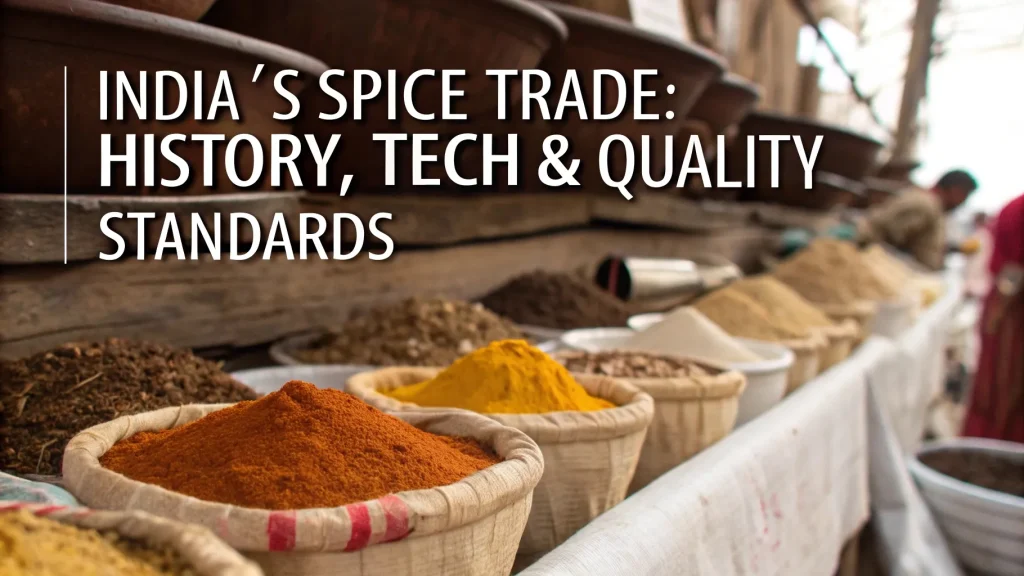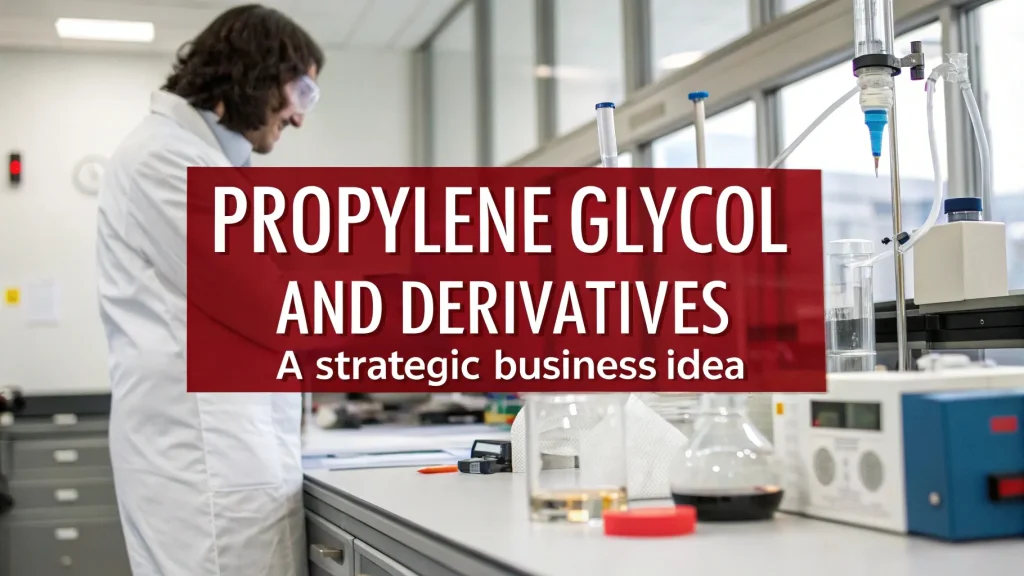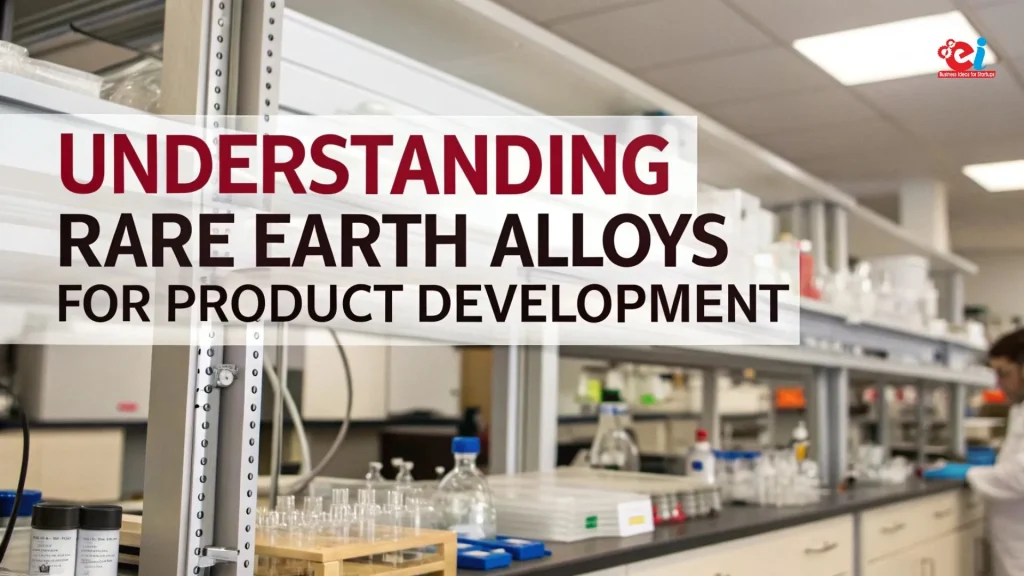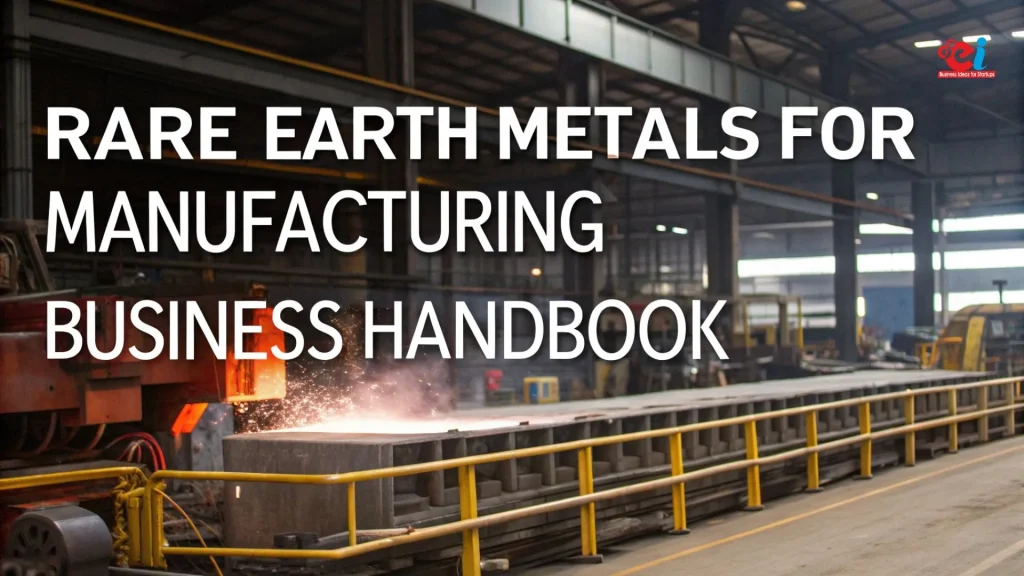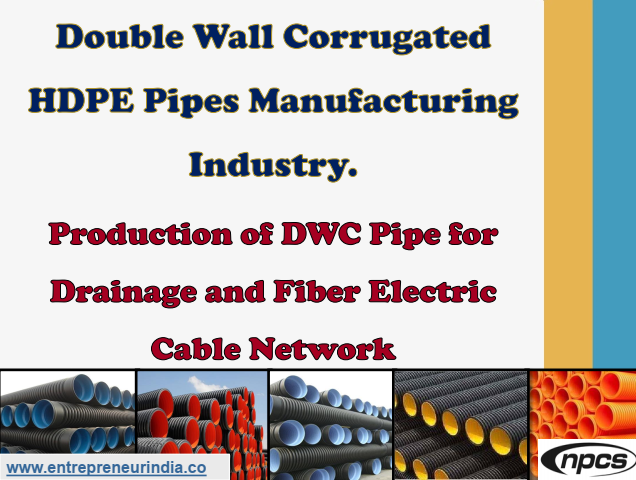
The Double Wall Corrugated HDPE Pipes Manufacturing Industry has emerged as a significant segment in modern infrastructure development, owing to the increasing demand for efficient, durable, and environment-friendly piping systems. These pipes are made using high-density polyethylene (HDPE) and feature a double-walled structure—an inner smooth wall and an outer corrugated one—that enhances their mechanical strength while maintaining flexibility and lightweight properties. The market for these pipes is expanding rapidly, driven by their application in sewage systems, stormwater drainage, cable ducting, and agricultural irrigation. Entrepreneurs entering the Double Wall Corrugated HDPE Pipes Manufacturing Industry can capitalize on infrastructure investments and regulatory shifts toward sustainable materials.
Applications and Industry Demand
Double wall corrugated (DWC) HDPE pipes are primarily used in underground cable protection, sewage systems, culverts, industrial effluent management, and stormwater drainage. Their resistance to corrosion, chemical attack, and soil movement makes them ideal for long-term underground installations. Unlike traditional metal or cement pipes, DWC HDPE pipes are lightweight and require less labor and equipment for installation, significantly reducing project costs.
The Double Wall Corrugated HDPE Pipes Manufacturing Industry benefits from the boom in smart city developments, water management projects, and renewable energy infrastructure. With growing awareness of plastic waste management and recyclability, HDPE-based products are gaining preference over PVC and metal alternatives.
Key Features of DWC HDPE Pipes
These pipes are known for a variety of high-performance attributes:
-
High ring stiffness and crush resistance
-
Chemical and corrosion resistance
-
Smooth internal surface for excellent flow characteristics
-
Lightweight yet extremely durable
-
Easy installation using push-fit or coupler joints
-
UV resistance and low thermal conductivity
Due to these features, the Double Wall Corrugated HDPE Pipes Manufacturing Industry is witnessing increased adoption across both public and private sector projects in urban and rural infrastructure.
Raw Materials Used in Production
The core raw material for these pipes is high-density polyethylene (HDPE), often classified under grades like PE63, PE80, or PE100. Additional materials may include:
-
Masterbatches for coloring and UV stabilization
-
Reprocessed HDPE (for outer layers in some applications)
-
Additives for extrusion processing and anti-oxidation
Procurement of consistent, high-quality raw materials is essential to ensure pipe strength, longevity, and compliance with BIS/ISO standards.
Manufacturing Process Overview
The production of double wall corrugated pipes involves a sophisticated extrusion technique, typically on a dual-line or single-line corrugator. Here’s a brief step-by-step overview:
-
Raw Material Feeding and Mixing: Virgin or recycled HDPE and additives are loaded into the hopper.
-
Extrusion: Twin extruders simultaneously create inner and outer layers of the pipe.
-
Corrugation Molding: As the material exits the extruders, it passes through a corrugator mold that shapes the outer wall while forming a smooth inner lining.
-
Cooling and Calibration: Pipes are cooled using water or air systems and calibrated to ensure precise dimensions.
-
Cutting and Socketing: Finished pipes are cut to length, and joints are formed as required.
-
Inspection and Packaging: Pipes undergo quality checks for ring stiffness, wall thickness, and appearance before being bundled or coiled for shipment.
Modern plants utilize programmable logic controller (PLC) systems to ensure accuracy and consistency across production runs.
Machinery and Equipment Required
To establish a unit in the Double Wall Corrugated HDPE Pipes Manufacturing Industry, the following machinery is needed:
-
High-speed twin screw extruders
-
Corrugator machine with interchangeable molds
-
Vacuum calibration tanks
-
Haul-off units and cutting machines
-
Socketing or belling machines
-
Quality testing instruments (ring stiffness tester, MFI tester, etc.)
The level of automation, production capacity, and pipe diameter range (from 40 mm to 1200 mm or more) will determine the size and cost of the machinery setup.
Infrastructure and Setup Requirements
A standard manufacturing facility will need:
-
8,000 to 15,000 sq. ft. of covered area
-
Strong flooring to support heavy extrusion lines
-
Separate areas for raw material storage, production, testing, and finished goods
-
Power supply with backup (HDPE extrusion lines are power-intensive)
-
Water recycling or cooling systems
-
Overhead cranes or forklifts for material handling
Additionally, safety and fire control systems must be in place, along with adequate ventilation.
Licenses and Regulatory Approvals
Starting a venture in the Double Wall Corrugated HDPE Pipes Manufacturing Industry requires several permits and certifications:
-
Factory License
-
MSME/Udyam Registration
-
GST Registration
-
Pollution Control Board clearance
-
Bureau of Indian Standards (BIS) Certification for IS 16098 (Part 2)
-
ISO 9001 Certification (for quality assurance)
Obtaining BIS certification not only ensures legal compliance but also builds trust with large infrastructure contractors and government buyers.
Cost of Setup and Profitability
The initial investment varies depending on production capacity and machinery automation:
-
Small unit (manual, low volume): ?35–50 lakhs
-
Medium-scale semi-automatic plant: ?75 lakhs – ?1.2 crore
-
Large-scale fully automatic plant: ?2–3 crore and above
Profit margins range from 20% to 35%, with better margins on large-diameter pipes or when supplying directly to government tenders. Return on investment (ROI) is achievable within 2–3 years under efficient operations and strong market outreach.
Key Market Segments and Buyers
The customer base for the Double Wall Corrugated HDPE Pipes Manufacturing Industry includes:
-
Government departments – for sewerage, cable ducting, and water drainage
-
Telecom companies – for underground fiber cable protection
-
Construction firms – for stormwater systems and civil engineering
-
Oil and gas pipelines
-
Agricultural sector – for subsurface irrigation and drainage
-
Export buyers – from Africa, the Middle East, and Southeast Asia
Participating in e-marketplaces and registering with public works departments can significantly boost bulk orders and long-term contracts.
Sustainability and Environmental Impact
HDPE is a recyclable material, and many players in the Double Wall Corrugated HDPE Pipes Manufacturing Industry use post-consumer plastic for non-critical applications. Unlike concrete or metal pipes, HDPE production involves less energy and emits fewer pollutants.
Manufacturers adopting zero-discharge processes, in-house water recycling, and green energy sources can position themselves as eco-friendly brands, which is increasingly attractive to government buyers and international partners.
Conclusion
The Double Wall Corrugated HDPE Pipes Manufacturing Industry offers a robust business opportunity aligned with modern infrastructure demands and environmental sustainability. From drainage to telecom, its applications are vast and expanding. With relatively moderate investment, scalable operations, and consistent market demand, this industry is ideal for entrepreneurs seeking long-term growth in the plastic manufacturing sector.
Whether you aim to serve local contractors or export to global infrastructure projects, establishing a DWC HDPE pipe unit is a future-proof investment with impressive profitability and impact.
Niir Project Consultancy Services
An ISO 9001:2015 Company
106-E, Kamla Nagar, Opp. Spark Mall,
New Delhi-110007, India.
Email: npcs.ei@gmail.com , info@entrepreneurindia.co
Tel: +91-11-23843955, 23845654, 23845886, 8800733955
Mobile: +91-9811043595
Website: www.entrepreneurindia.co , www.niir.org

